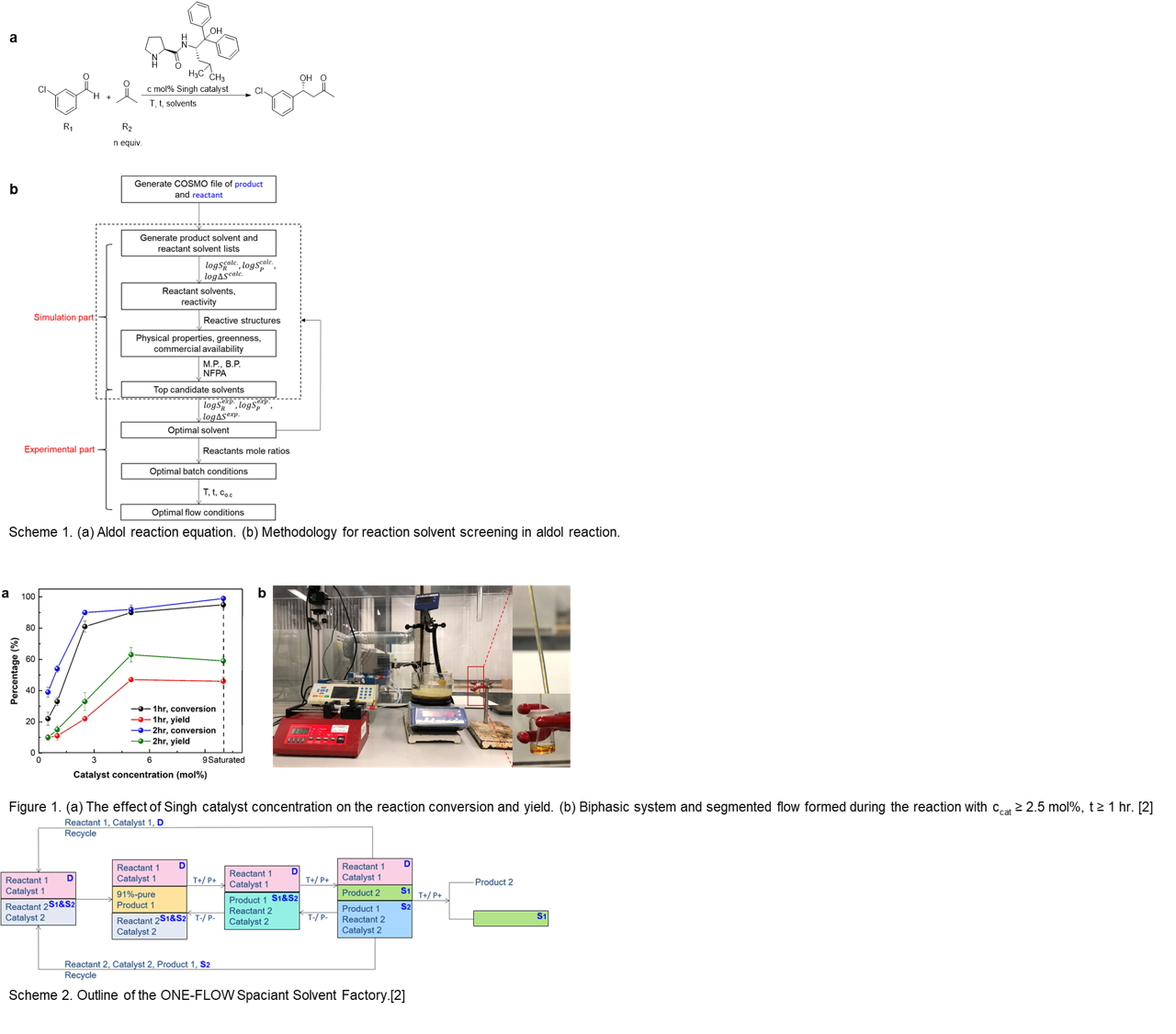(642g) Selection of Functional Solvent Factory for Automatic Aldehyde and Ketone Separation in Aldol Reaction: A Combined Simulation and Experimental Approach
AIChE Annual Meeting
2020
2020 Virtual AIChE Annual Meeting
Process Development Division
Novel and Reactive Separations
Thursday, November 19, 2020 - 9:15am to 9:30am
The 2-step cascade from 3-chlorobenzaldehyde to (1R,3S)-1-(3-chloro-phenyl)butane-1,3-diol, well-established by Groeger’s group, [1] is studied as a model system. This is part of a chemoenzymatic cascade combining organo- and biocatalysis, which represents in general an attractive process concept for producing pharmaceutical medicines. In this work, we are exploring to achieve the functionalities of product separation and reactant/catalyst recovery solely by multi-phases with designer solvents. This would allow to reduce complex reaction and separation equipment as well as catalyst modification to one single tube reactor using a standard catalyst (one-flow). Firstly, a large database of conventional organic solvent and/or ionic liquids (ILs) is generated from the COSMOthermX software. Then, the reactivity potential of different families of solvent with the reactants is considered to narrow the screening space. Furthermore, relevant physical properties and the environmental effect of solvents (LCA assessment) is taken into account to screen out the suitable solvents. Afterwards, the top solvent candidates were carefully evaluated by experiments.[2, 3] The whole ‘One-Flow’ solvent screening methodology for aldol reaction is given in Scheme 1 [2].
As key result, dodecane as best aldol reaction solvent and two 1-butyl-3-methylimidazolium based ionic liquids as candidate solvents in enzymatic reduction are identified. Up to 92mol% conversion and with (R)-aldol product yield (63 mol%) for aldol reaction is obtained, shown in Figure 1.
Meanwhile, we propose the compatibility of nanoreactor into the micro-flow reactor to protect and separate catalysts. Our final goal is to achieve multi-step reactions in one run (ONE-FLOW) in multi-phasic systems using this methodology, i.e. to mimic the metabolic cascades of nature. In Scheme 2, [2] we have envisioned how such Spaciant Solvent Factory for a two-step catalytic reaction may look alike.
Acknowledgements
The research work is supported by FET-Open EU project ONE-FLOW (grant no. 737266). The authors acknowledge the "Deutsche Forschungsgemeinschaft" SFB/TRR 63 project InPROMPT and the grant (15120868/218) of the University of Adelaide.
References
[1] Rulli G, et al. Angewandte Chemie International Edition, 2011, 50(34): 7944-7947.
[2] Zhang C, Song Z, Jin C, et al. Chemical Engineering Journal, 2020, 385: 123399.
[3] Morales-Gonzalez O M, Zhang C, Li S, et al. Chemical Engineering Science: X, 2019, 3: 100024.
Topics
Checkout
This paper has an Extended Abstract file available; you must purchase the conference proceedings to access it.
Do you already own this?
Log In for instructions on accessing this content.
Pricing
Individuals
| AIChE Pro Members | $150.00 |
| AIChE Emeritus Members | $105.00 |
| AIChE Graduate Student Members | Free |
| AIChE Undergraduate Student Members | Free |
| AIChE Explorer Members | $225.00 |
| Non-Members | $225.00 |
